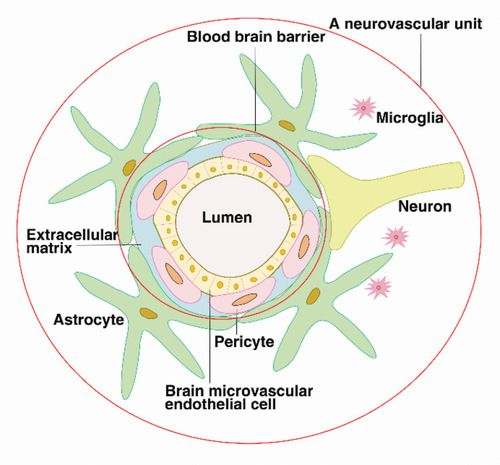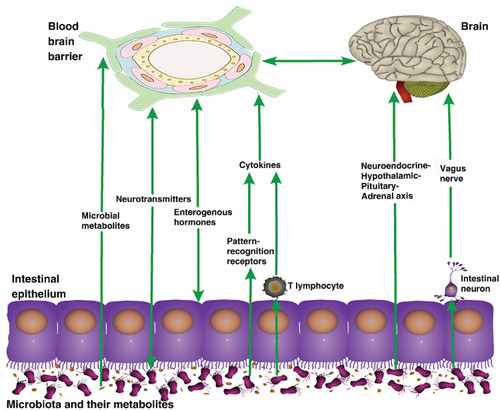Figures & data
Figure 1 The blood–brain barrier is composed of brain microvascular endothelial cells, pericytes, the continuous basement membrane and the perivascular feet of astrocytes, preventing the entry of harmful substances into the brain tissue. The blood–brain barrier interacts with extracellular matrices, neurons, and microglia, forming neurovascular units, which regulate the structure and function of the blood–brain barrier.


